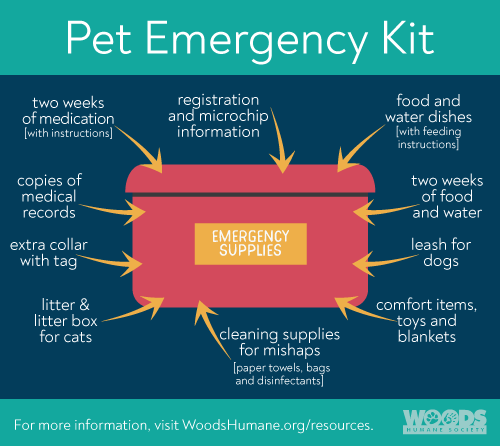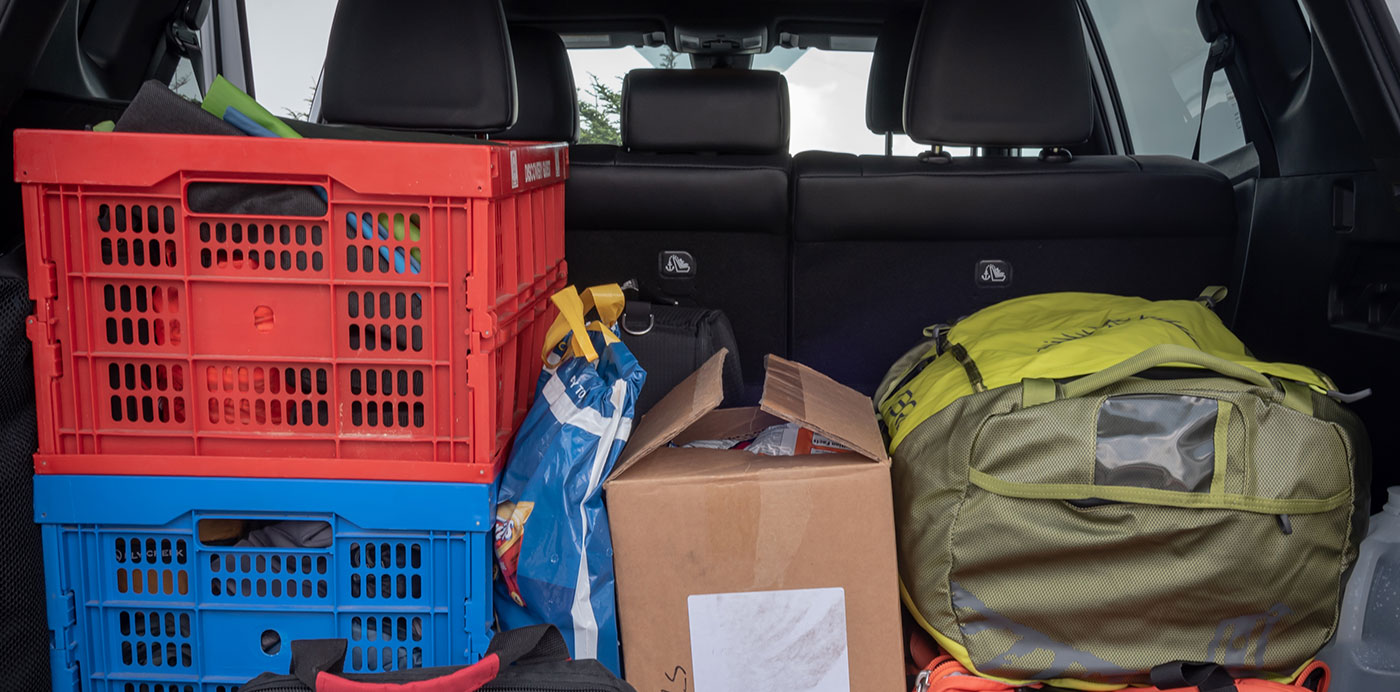Prepare a Pet Emergency Kit
- ID tags, collars & microchip numbers
- Leashes, harnesses
- Plastic carriers for small dogs and cats
- Pet food & water
- Food & water bowls
- Pet medications
- Litterbox & litter
- Poop bags
- Bedding
- Cleaning supplies
- Toys or comfort items
- Copies of medical and vaccination records and current photographs
- Contact information for: your veterinarian, a relative or alternate care-taker, and an out-of-area emergency contact
For more resources, visit Ready.gov/pets, or download their checklist in English or Spanish.



